This page contains affiliate links. Please read our disclosure for more info.
Saihoji Temple is our new favourite temple in Kyoto. Nicknamed Kokedera or Moss Temple, this beautiful spot features a garden covered in vibrant green moss.
You must make a reservation for the Kyoto Moss Temple, but this means that crowds are lower than other popular temples in the city.
We found the experience so peaceful and relaxing, especially as you start your visit by copying sutras to calm your mind.
In this guide to Saihoji Temple, I explain how to make a reservation, provide directions to the temple, and share photos from our visit.
Contents
- About Saihoji
- How to Make a Saihoji / Kokedera Reservation
- Where is the Kyoto Moss Temple?
- Copying Sutra at Saihoji
- Exploring the Saihoji Moss Garden
- How Long to Spend at Saihoji
- The Best Time to Visit Saihoji
- Is Saihoji Worth Visiting?
- More Japan Posts
About Saihoji
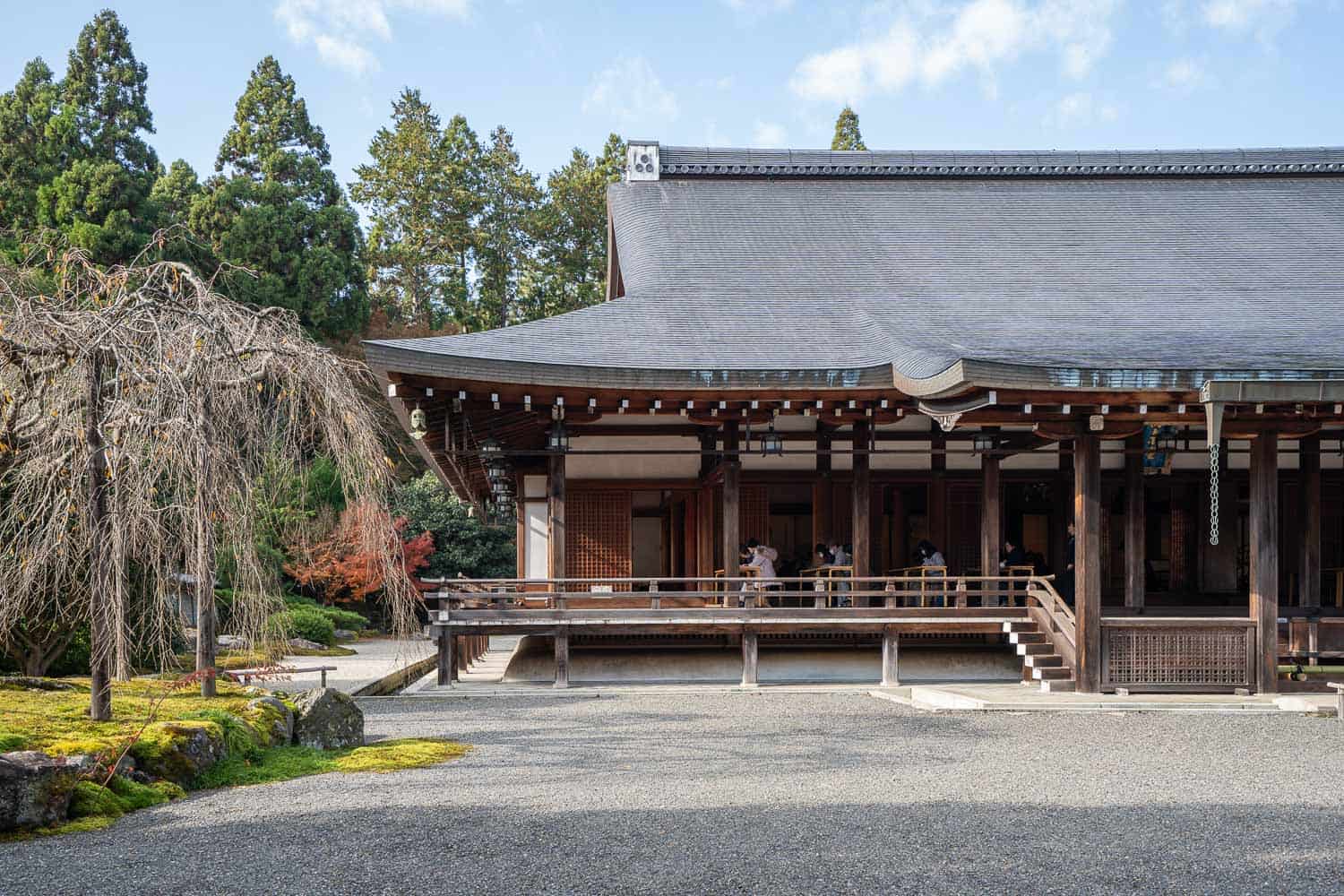
Saihoji is a Rinzai Zen Buddhist Temple that dates back to 731.
In 1339, the high priest and master gardener Muso Kokushi restored the then-neglected temple as a Zen temple of the Rinzai Sect.
The gardens at Saihoji inspired the designs of many famous Japanese gardens, including the Golden and Silver Pavilions (Kinkakuji and Ginkakuji).
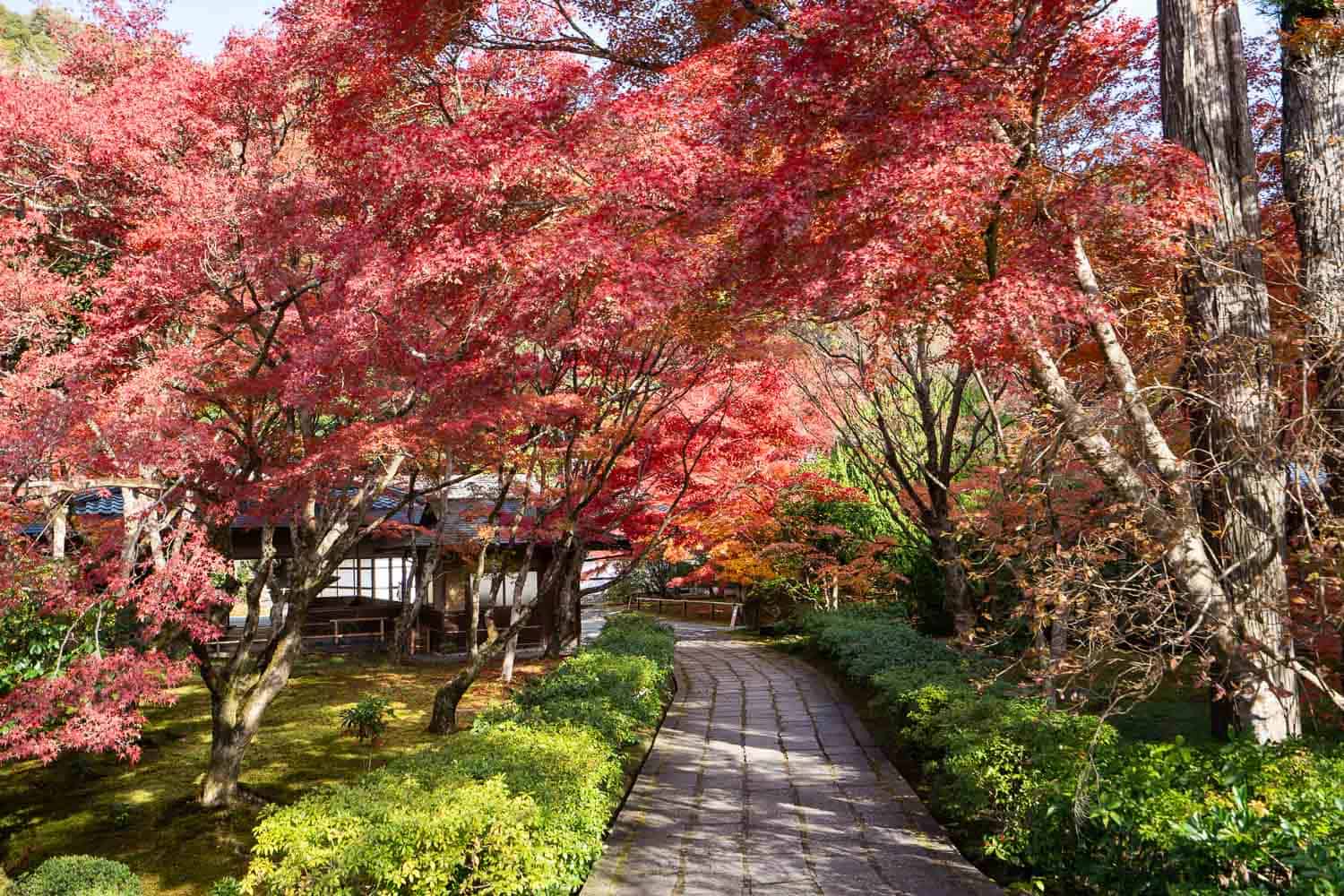
The temple has been rebuilt many times after being destroyed by fire and floods. That destruction (and subsequent neglect) eventually led to the growth of moss, which took more than 100 years to cover the garden completely.
In 1994, Saihoji was registered as a UNESCO World Heritage Site as part of the Historic Monuments of Ancient Kyoto.
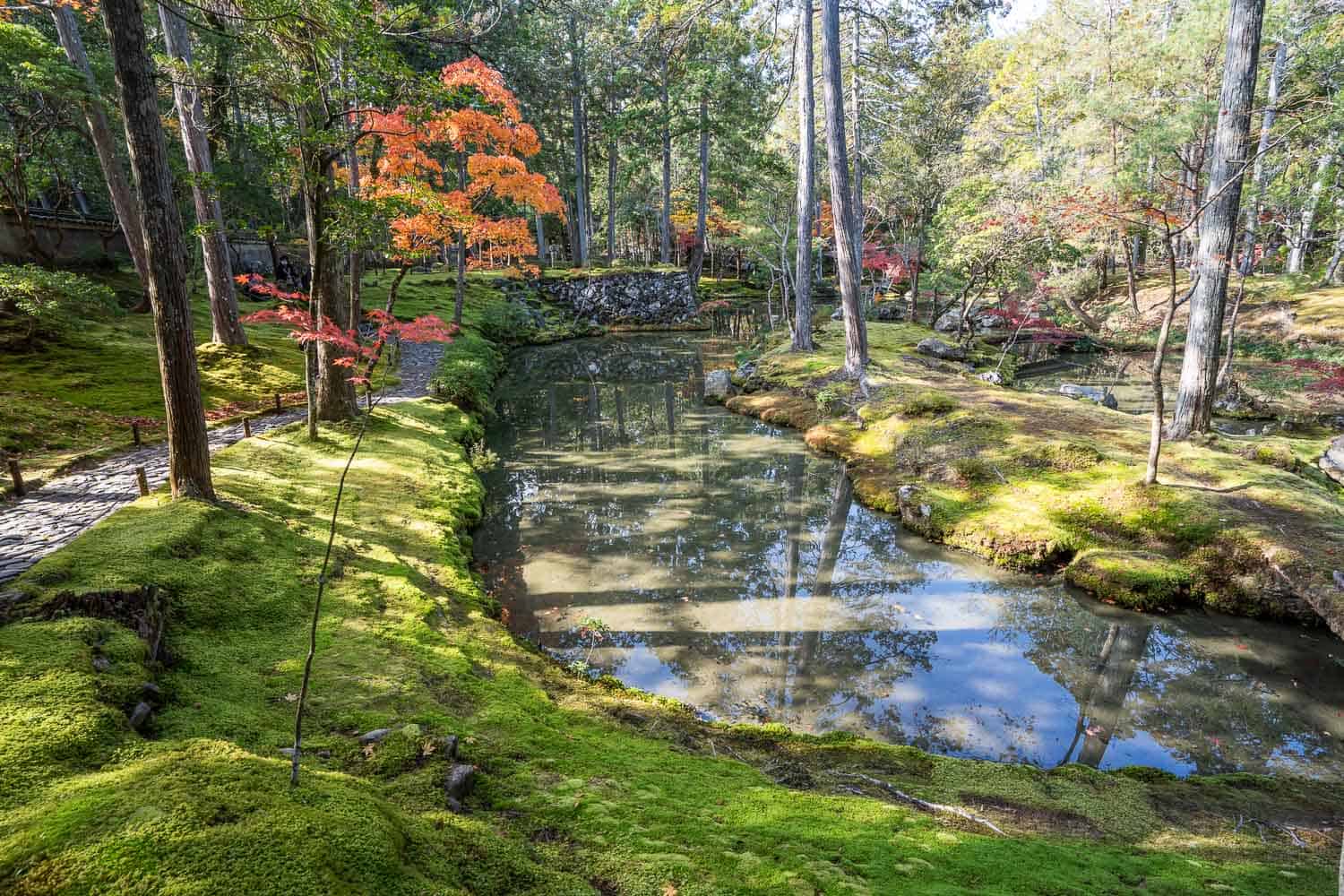
How to Make a Saihoji / Kokedera Reservation
Saihoji Temple requires all visitors to make an advance reservation to limit visitor numbers and protect the moss.
On previous visits to Kyoto, I was put off by the reservation system, which required sending a postcard, but thankfully, you can now book online.
Bookings open two months in advance until 11.59pm JST the day before your visit.
You may find last-minute availability, but I recommend booking as far in advance as you can, especially during peak seasons like November.
Opening hours are variable, so check the booking calendar on the website.
To book, go to the Nichi-nichi Sanpai page on the Saihoji website and create an account.
Entrance costs 4000 yen ($26) plus a 110 yen ($1) booking fee per person. This is much more expensive than other temples in Kyoto, but it does include a pen.
You can only book for up to two people. Visitors must be aged 13 or older to visit.
I recommend booking a 9.30am or 10am entry time (we went at 10am), which allows you to spend the rest of the day in nearby Arashiyama.
There’s no need to print your ticket—you can show the QR code on your phone at the gate (you’ll be sent a link by email). You may need to show ID, but we didn’t have to.
Cancellation fees are:
- Up to 4 days before – Free.
- 1 – 3 days before – 50% of the fee.
- On the day of your visit – 100% (no refund).
Where is the Kyoto Moss Temple?
Saihoji is a bit out of the way in western Kyoto, but it’s not far from the Arashiyama area, which is full of things to do (see my Kyoto guide for ideas). It’s easy to combine the two.
It’s located at 56 Matsuojingatanicho, Nishikyo Ward, Kyoto. See the Google Maps location.
Getting from Downtown Kyoto to Saihoji
To get to Saihoji from downtown Kyoto, take the Hankyu train from Kawaramachi Station to Katsura Station (11 minutes) and then change to get to Kami-katsura Station (2 minutes).
From there, it’s a 20-minute walk through a peaceful neighbourhood. We were early, so we stopped at Jizō-in Temple (500 yen/ $3) on the way, a hidden gem with a lovely bamboo grove.
You can also search for alternative transport routes on Google Maps. You can get a bus from Kyoto Station all the way to Saihoji, but it takes at least an hour and will likely be crowded.
Getting from Saihoji to Arashiyama
To get from the Kyoto Moss Temple to Arashiyama, you can take the bus or taxi or walk 45 minutes.
The bus stop is only a few minutes away (Kokedera Suzumusidera on Google Maps) and buses 63 or 73 go to Arashiyama.
As a taxi was waiting near the bus stop, we decided to get it to save time.
It was a 15-minute drive and cost 1500 yen ($10). I recommend getting dropped off before Togetsukyo Bridge to avoid driving on the crowded main street.
Copying Sutra at Saihoji
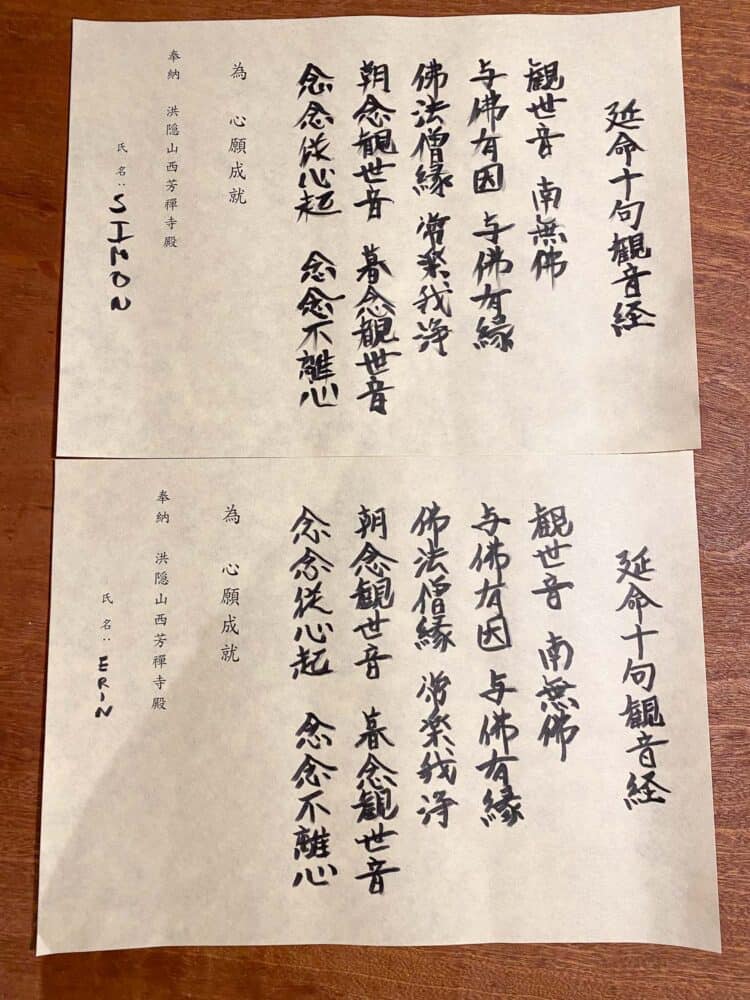
Every visit to Saihoji starts in the main hall, where you copy a sutra (a Buddhist prayer written in Japanese).
The idea is that focusing on the copying calms your mind and prepares you for visiting the gardens. This did work, and everyone walked around the gardens quietly.
You are given a calligraphy pen (which you keep) when you enter the temple, and the sutras are ready in the main hall.
You’ll find toilets in the main hall before you enter the sutra room. Take off your shoes before entering the hall and wear the provided slippers.
You can choose to sit on a stool at a higher table on the porch or on the floor on a low table in the main part of the temple.
Photos and talking is not allowed.
I was a bit nervous, but copying the sutra wasn’t difficult—you just trace over the Japanese script with your pen.
Instructions are in English, and no one pays attention to what you are doing. You don’t even need to finish it, but we completed ours in about 15 minutes.
You can then take your sutra with you or leave it as an offering.
It’s a lovely, calming way to start your visit.
Exploring the Saihoji Moss Garden
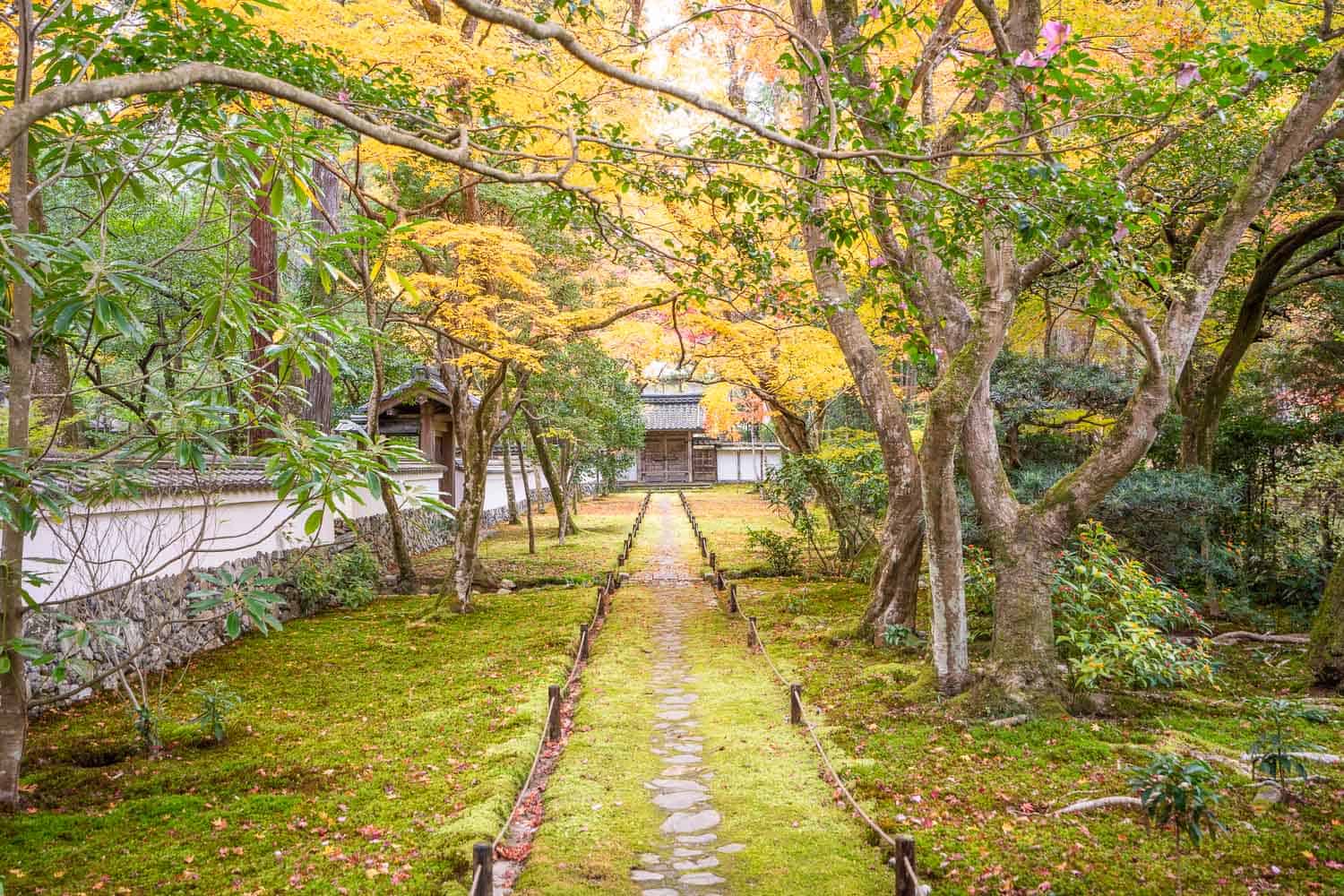
Once you’ve finished your sutra, you can leave and explore the moss garden at your own pace.
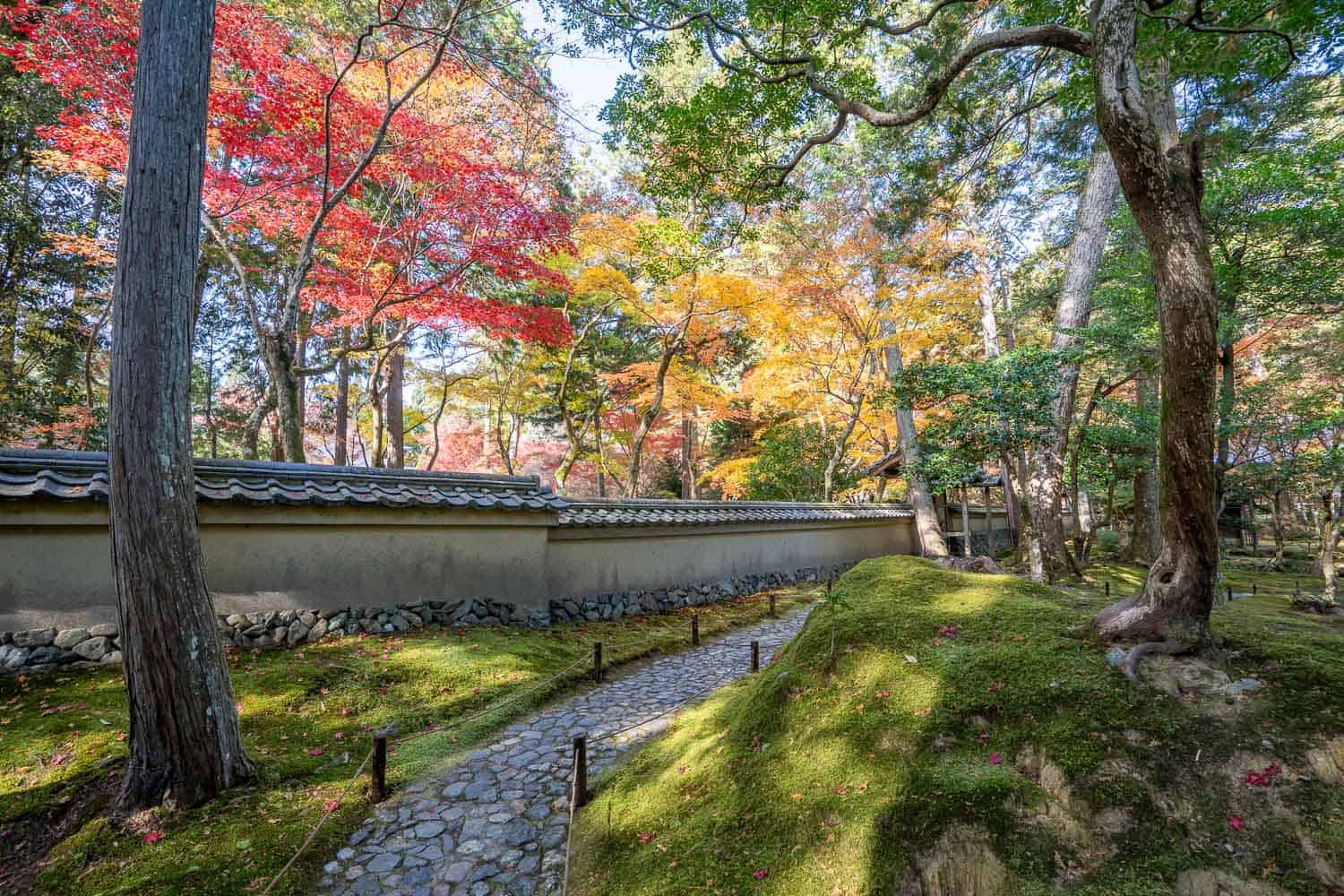
The lower garden is a strolling garden focused around a large pond called Ogonchi (Golden Pond).
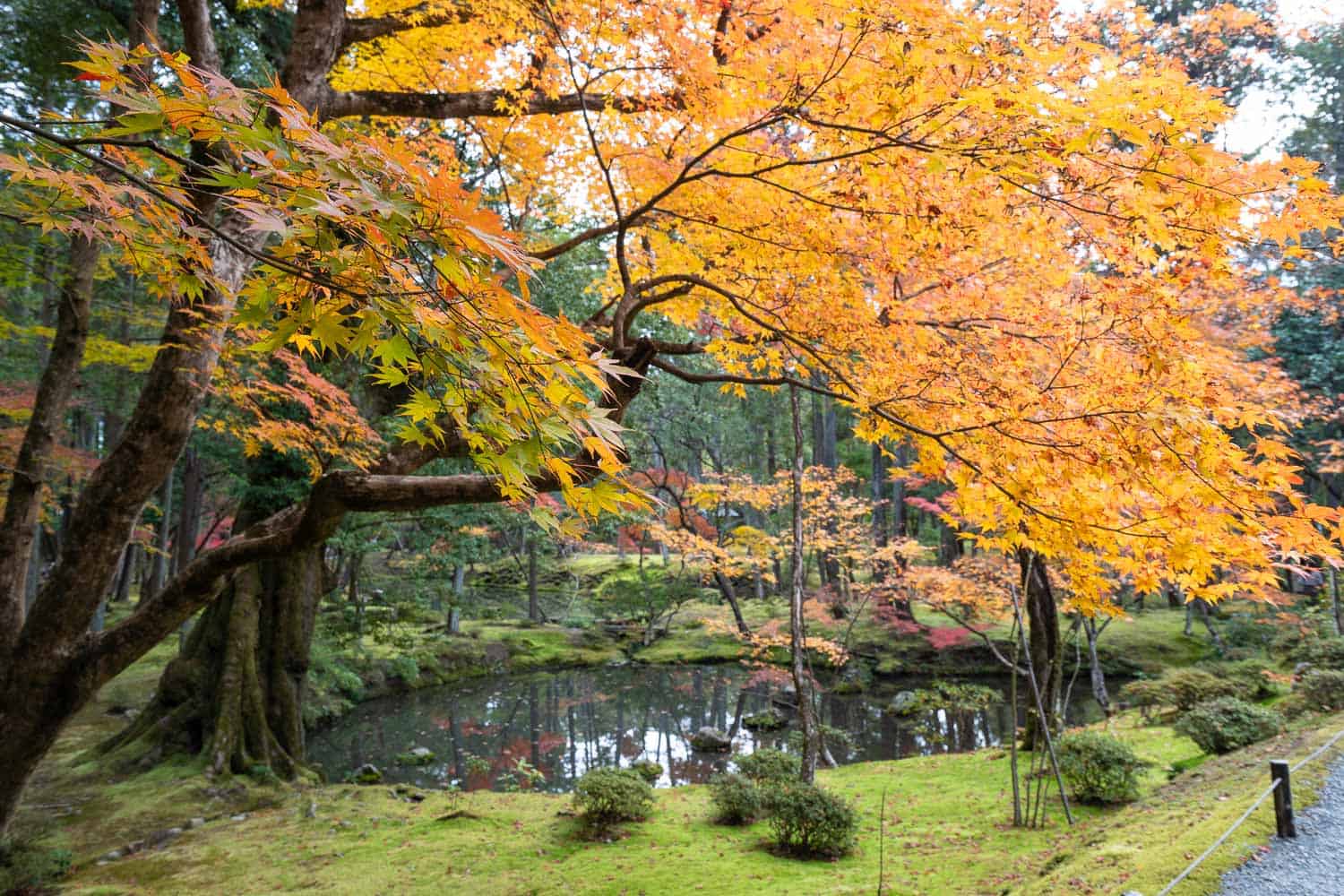
The route takes you on a stone path around the pond, where you can enjoy the view of its mossy banks. To avoid damaging the moss, don’t walk on it.
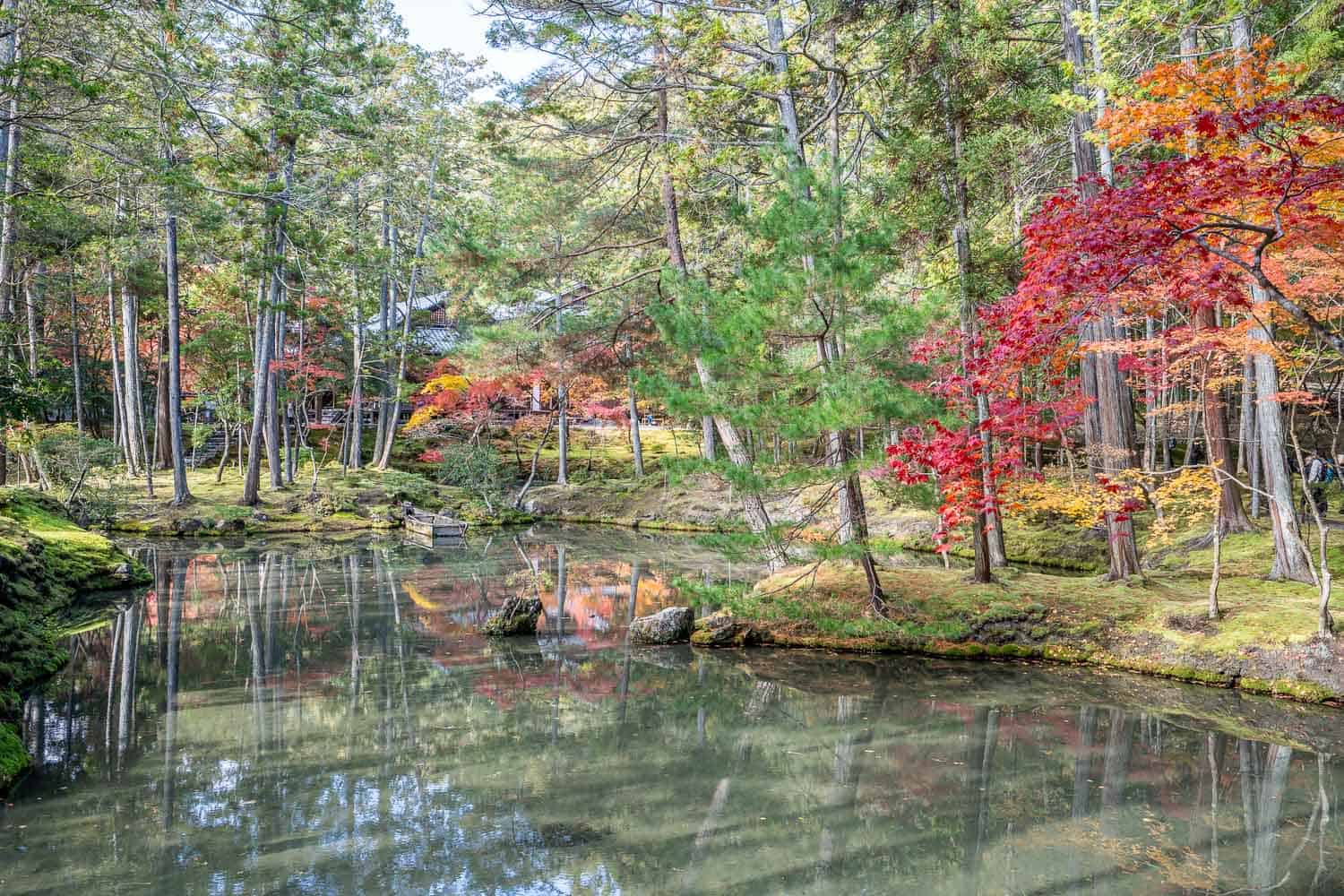
The garden has 120 types of moss that create a carpet from golden to vibrant green, especially lovely in dappled sunlight.
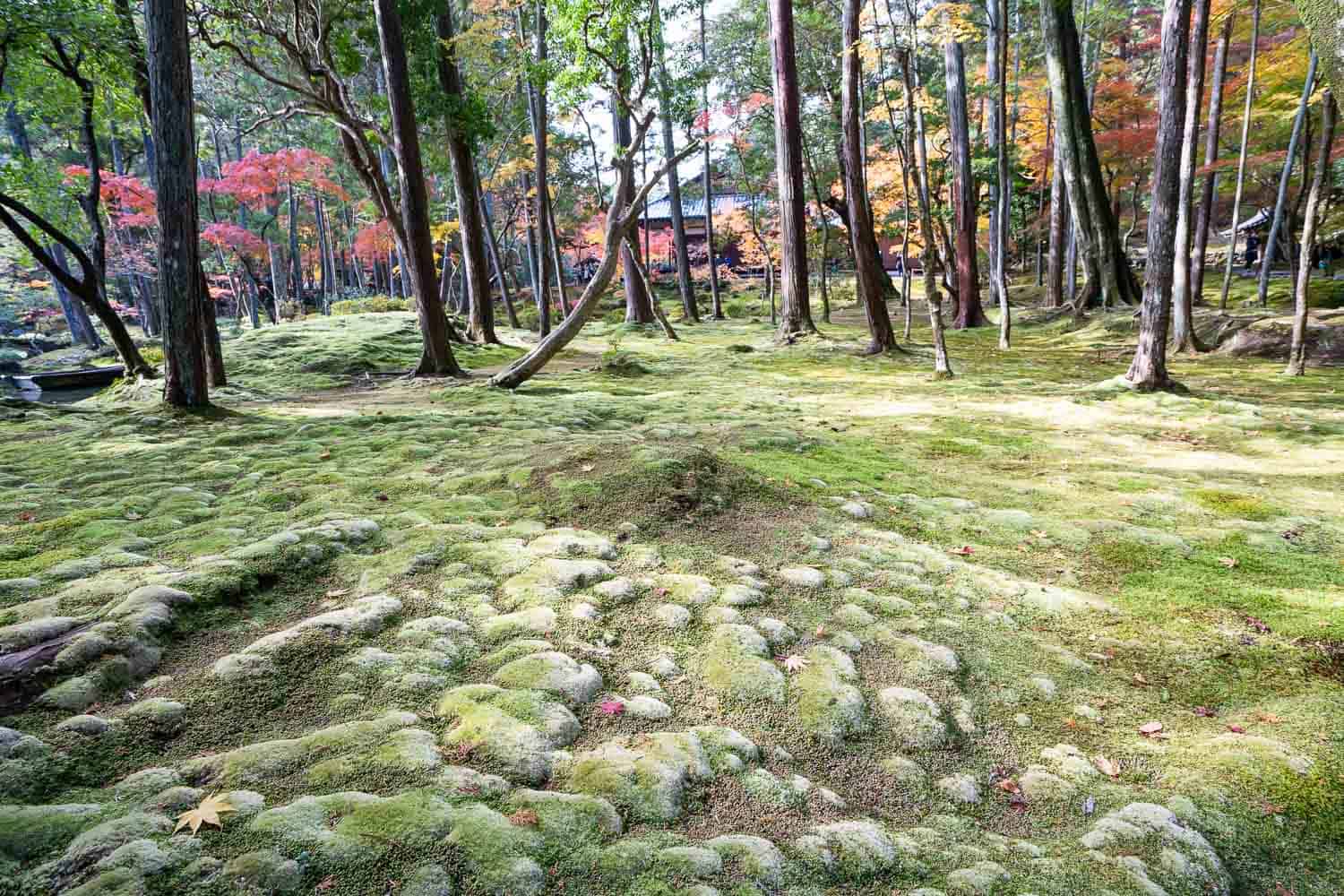
It’s such a beautiful place, and it felt so special to be able to enjoy it without hoards of people. Everyone was quiet, enjoying the tranquillity.
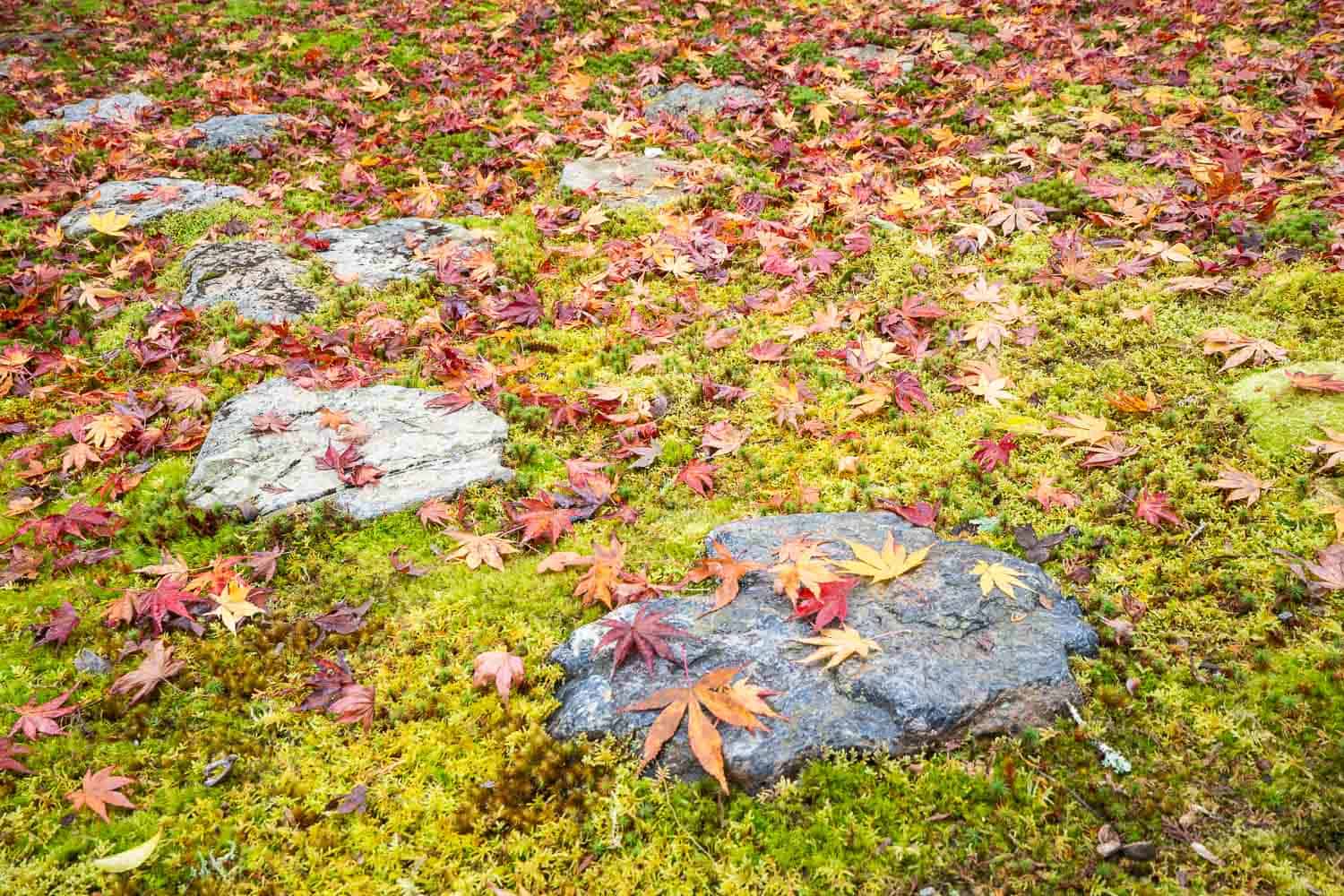
In late November, we enjoyed the contrast of yellow and red maples against the green moss.
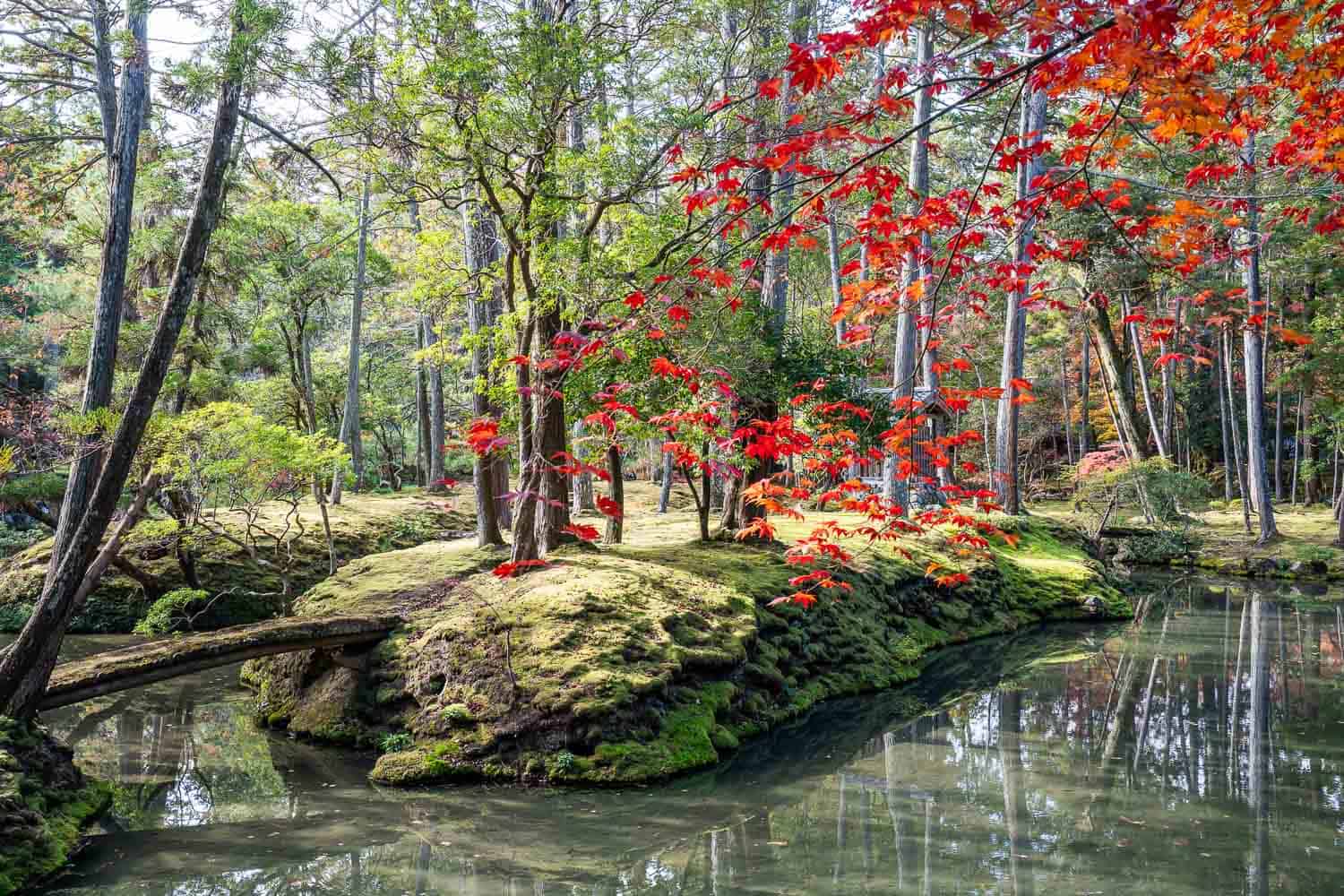
The reflections in the pond and the picturesque stone bridge leading to a mossy island added to the magic.
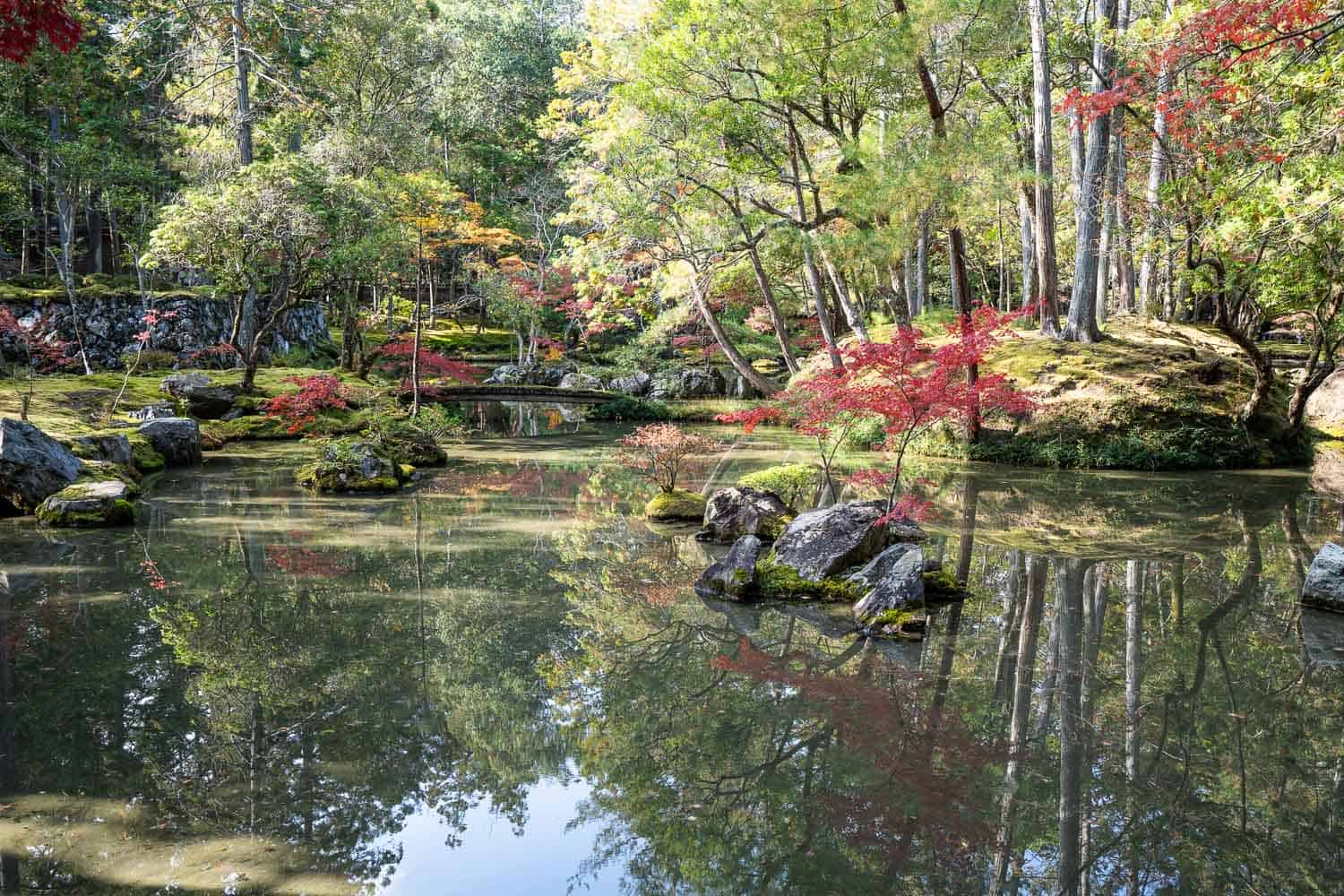
An old rowing boat reminds us of the time when shoguns came to view the garden by boat.
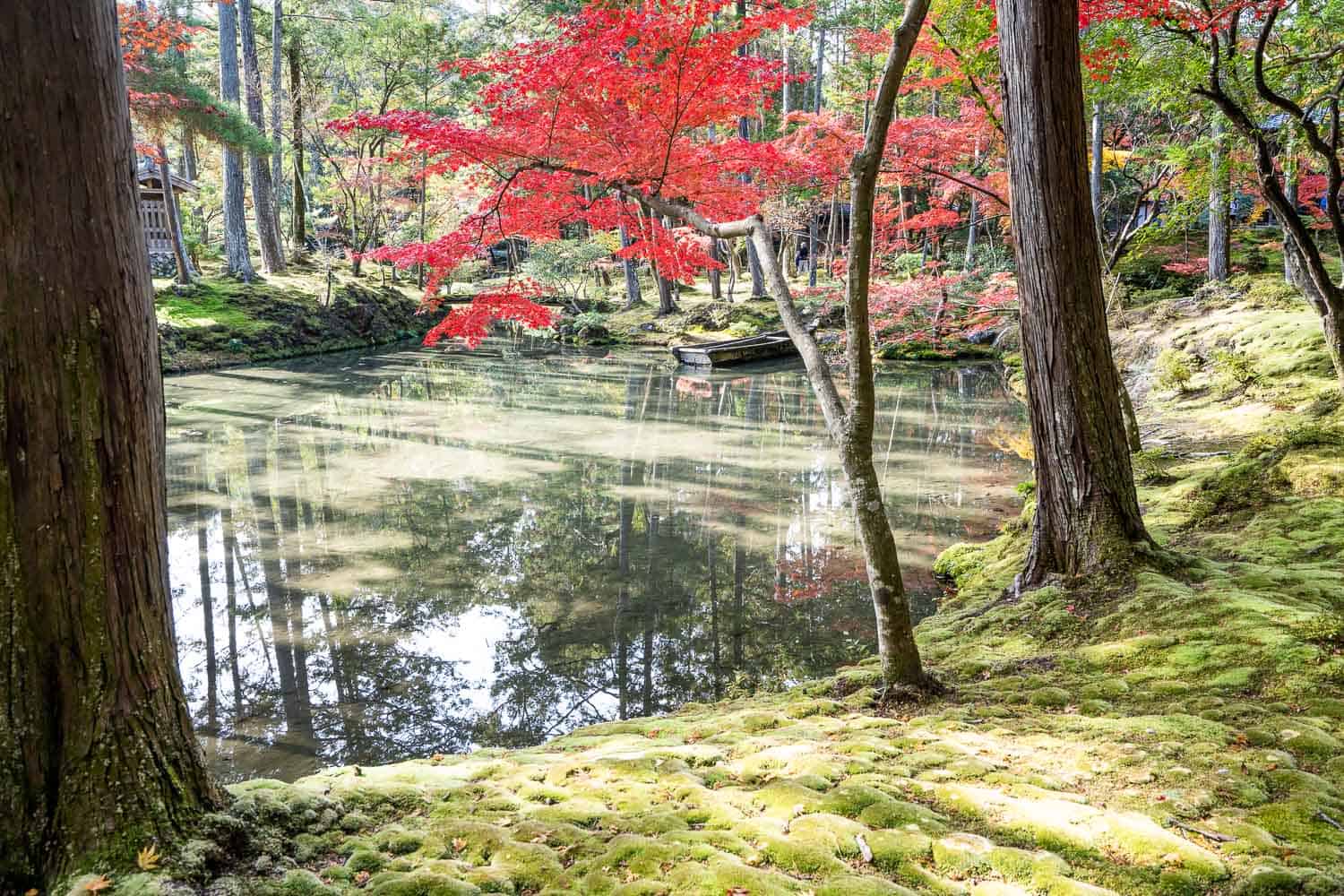
The gardens have a few old teahouses (no longer in use), but the experience is more about nature than architecture.
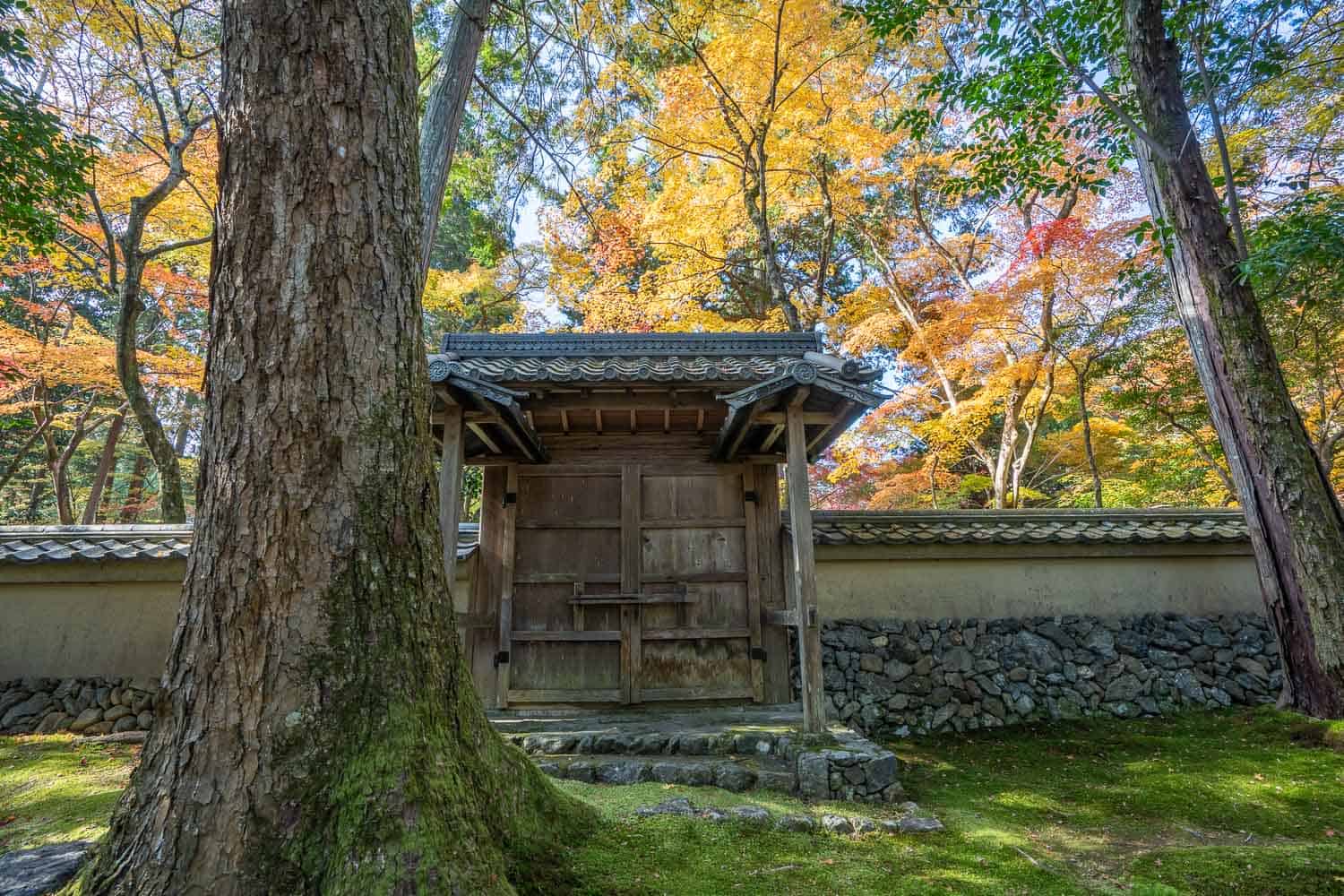
We loved the Moss Garden so much that we did a second loop around the pond, this time without taking any photos and just enjoying all the details.
How Long to Spend at Saihoji
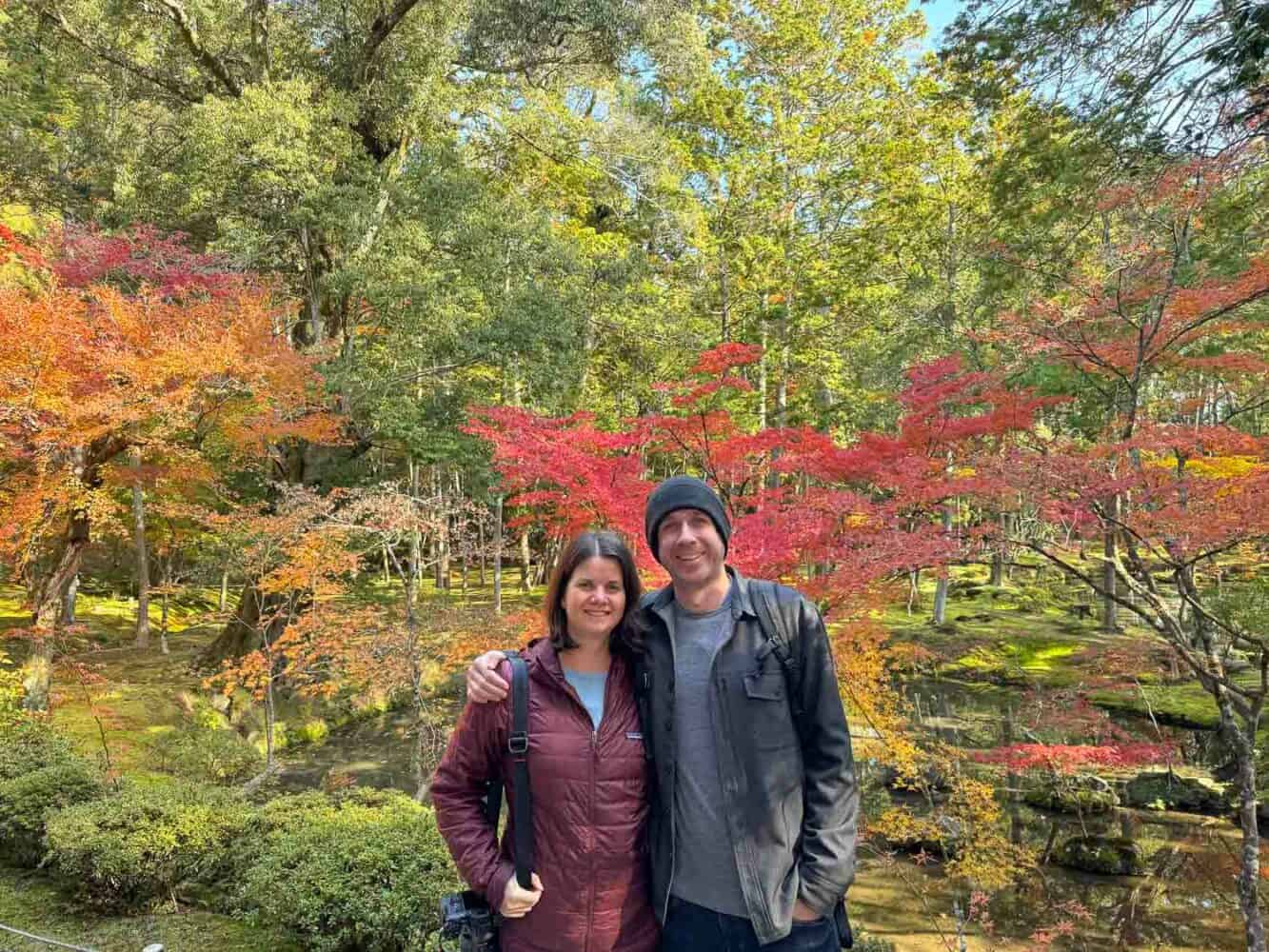
We spent 1 hour and 15 minutes at Saihoji, which was enough time to complete our sutra drawing and walk around the garden twice.
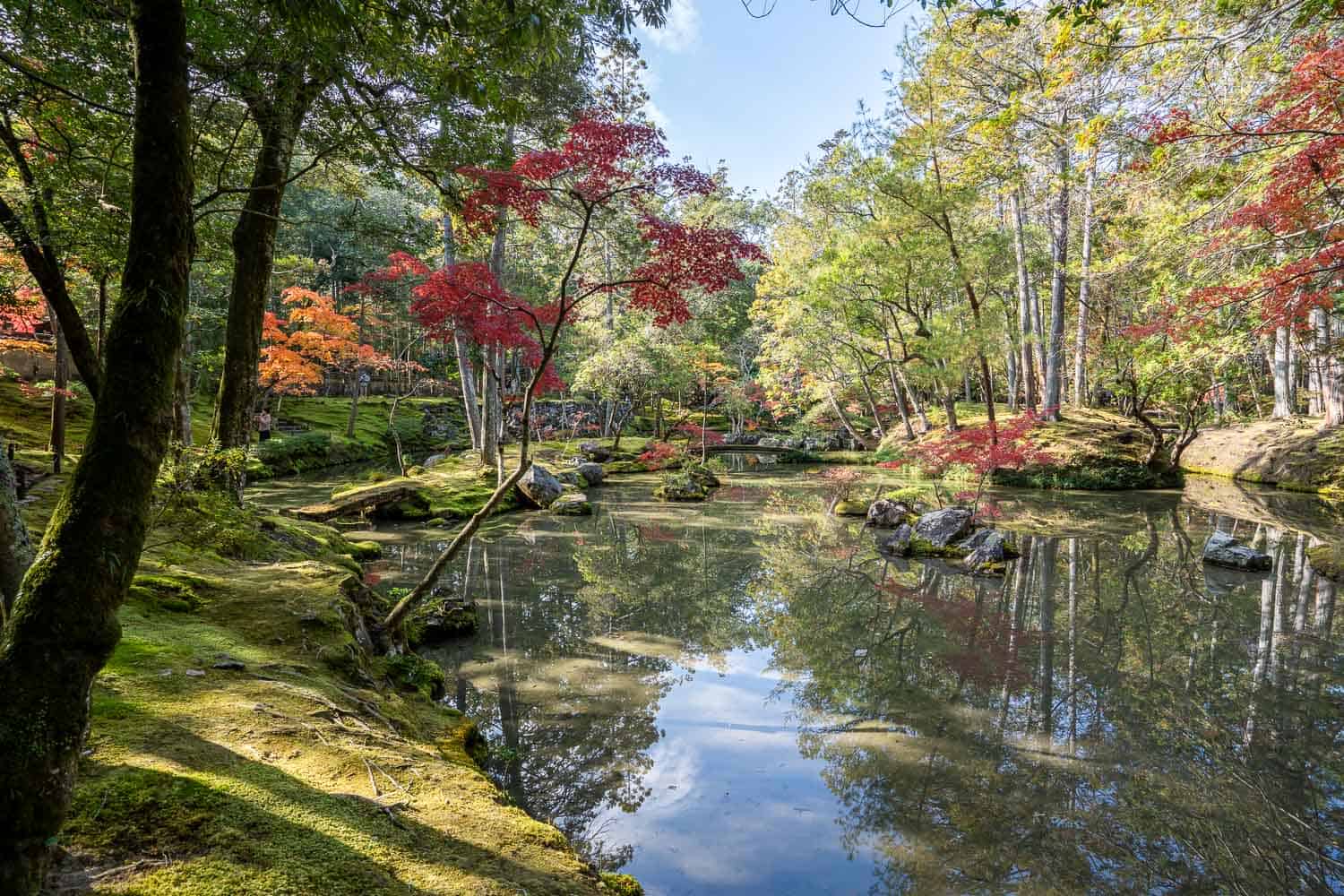
You could spend longer if you wanted to linger over your copying or find a peaceful spot to meditate.
The Best Time to Visit Saihoji
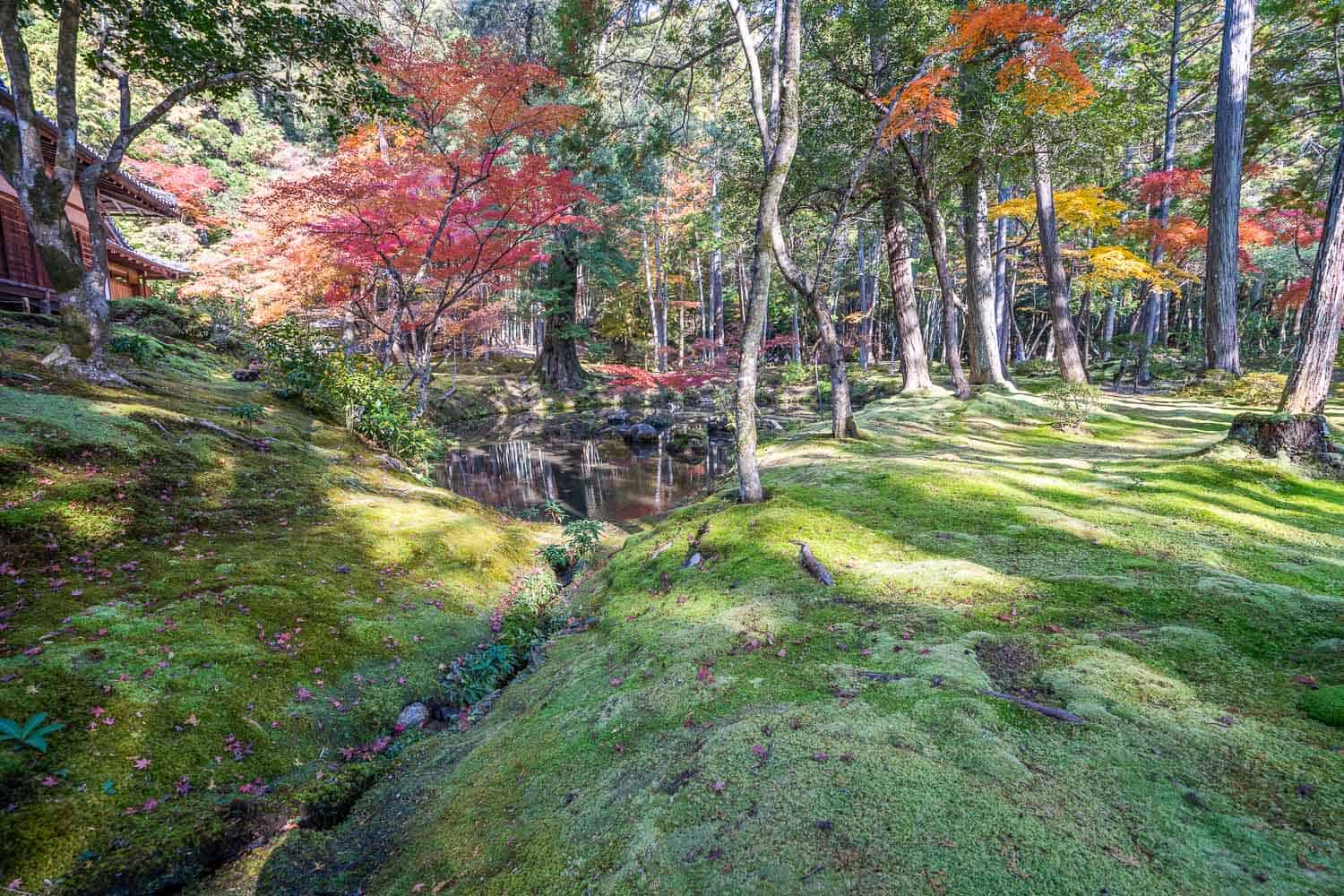
Saihoji/ Kokedera can be visited at any time of year except mid-January to February when the garden is closed to tourists to allow it to rest.
The best time to visit Saihoji is when the moss is greenest during or just after the rainy season from June to mid-July.
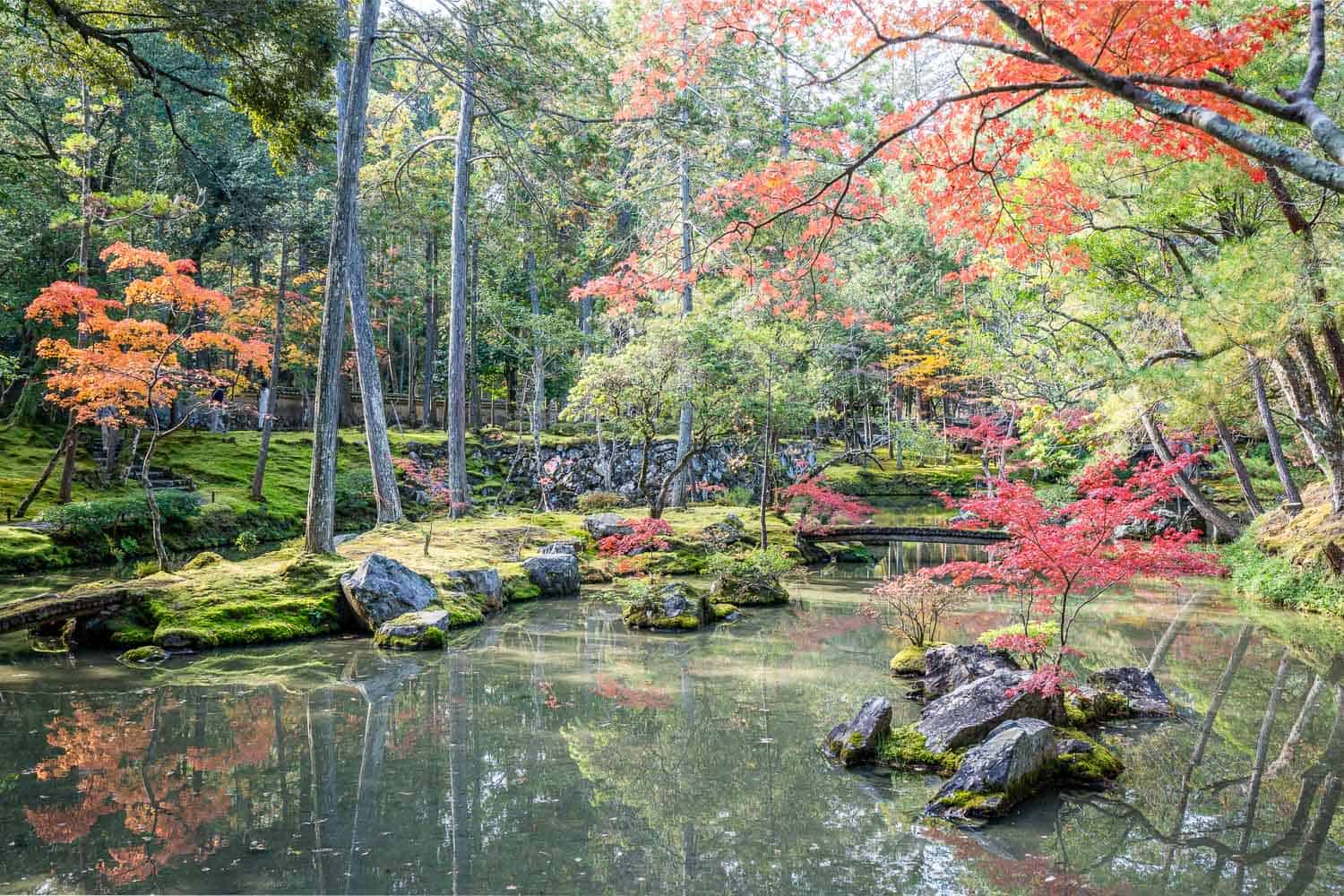
We visited in late November, at the peak of the Kyoto autumn season, and it was wonderful to see the garden contrasting with the red maples. I highly recommend it, but do book two months in advance.
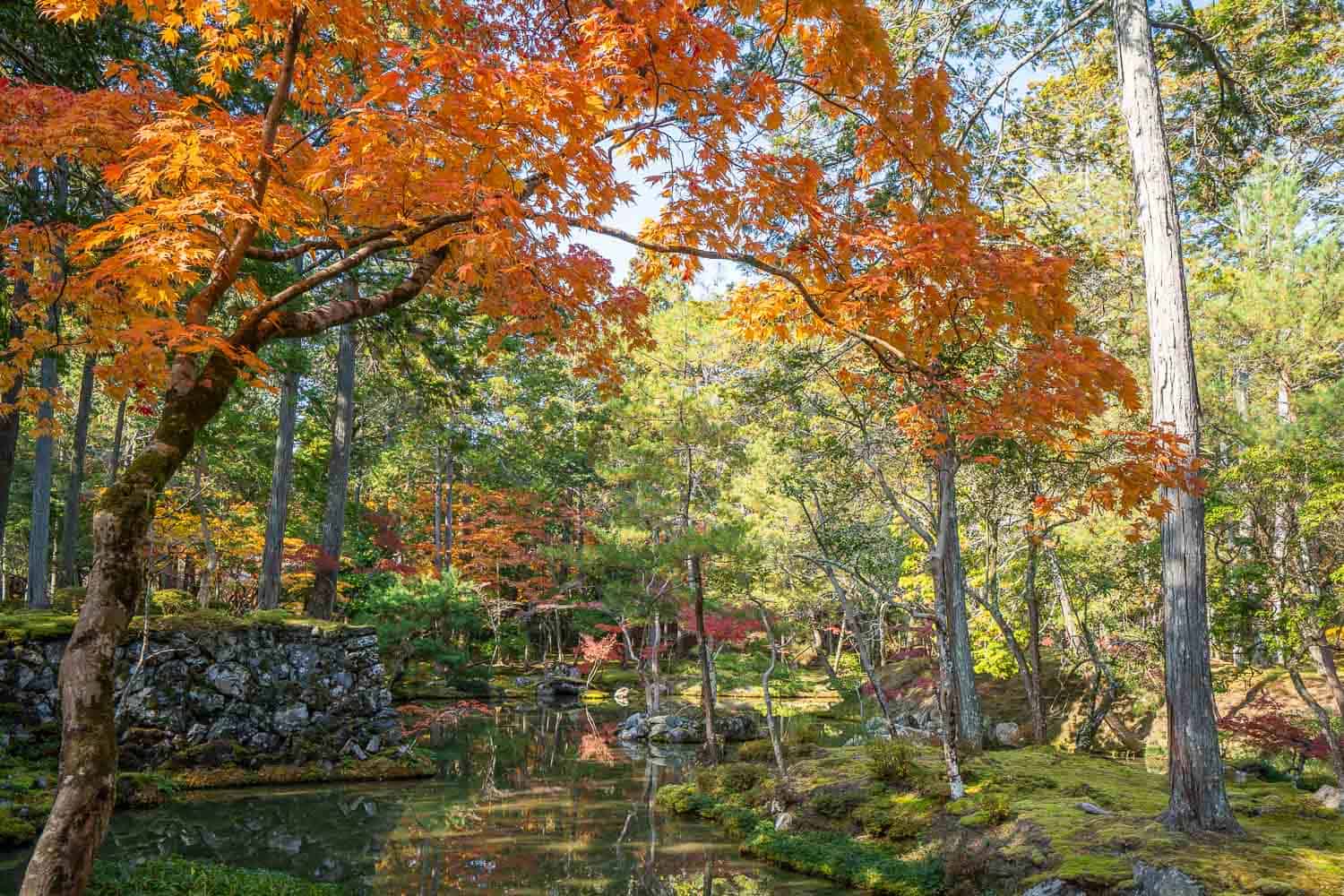
The moss is a duller shade of green in winter and spring, but I still think it would be worth seeing.
Is Saihoji Worth Visiting?
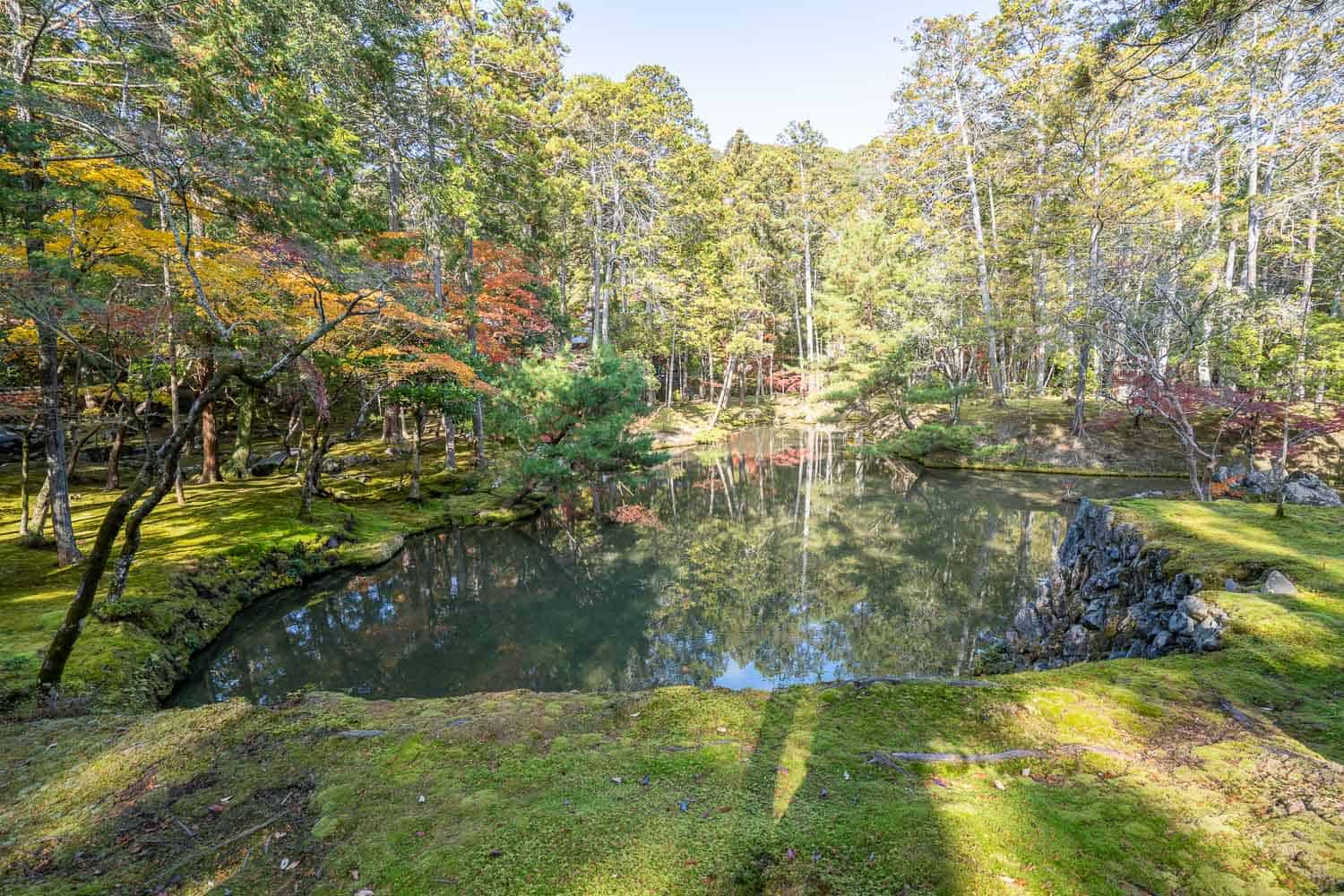
Saihoji or the Moss Temple Kyoto is the most expensive temple in the city, and it’s quite far from downtown Kyoto, but for us, it was absolutely worth visiting.
It’s now our favourite temple garden in Kyoto. It’s a stunning place with low crowds and a serene atmosphere you don’t often find at Kyoto’s popular sights.
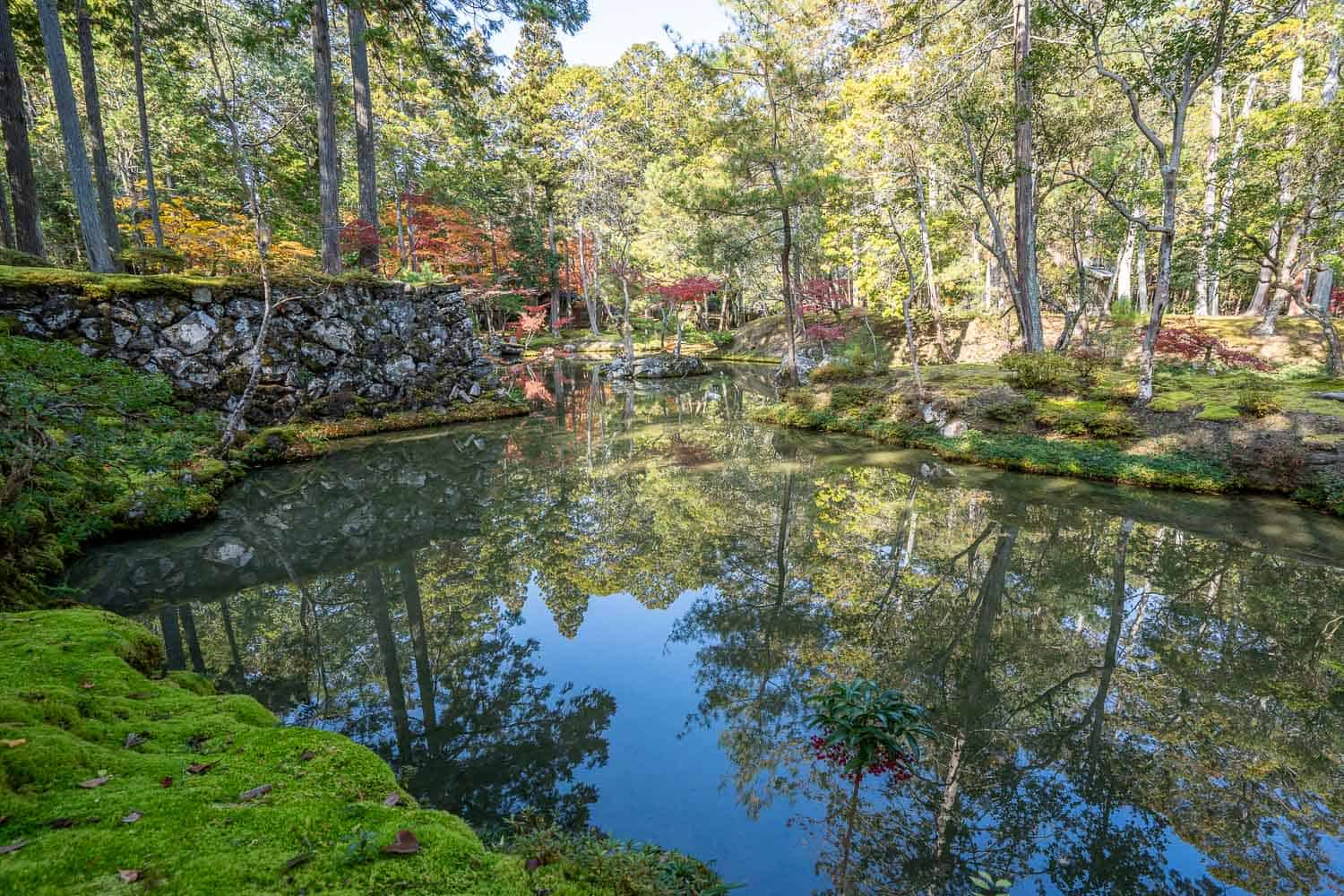
Sahoji isn’t the place to come for stunning temple buildings, but if you love gardens and want a unique, quieter experience, it’s well worth reserving your spot.
More Japan Posts
Kyoto
- 26 Unforgettable Things to Do in Kyoto, Japan
- Where to Stay in Kyoto: Recommended Hotels and Areas
- 20 Best Vegetarian Restaurants in Kyoto
- The Ultimate Guide to Kyoto Temples and Shrines
- 14 Best Day Trips from Kyoto
- 10 Best Places to See Fall Foliage in Kyoto
Rest of Japan
- Planning a Trip to Japan: Dos and Don’ts
- 16 Unmissable Places to Visit in Japan
- Two Weeks in Japan: A Detailed Itinerary
- 56 Best Things to Do in Japan for an Unforgettable Trip
If you enjoyed this post, pin it!
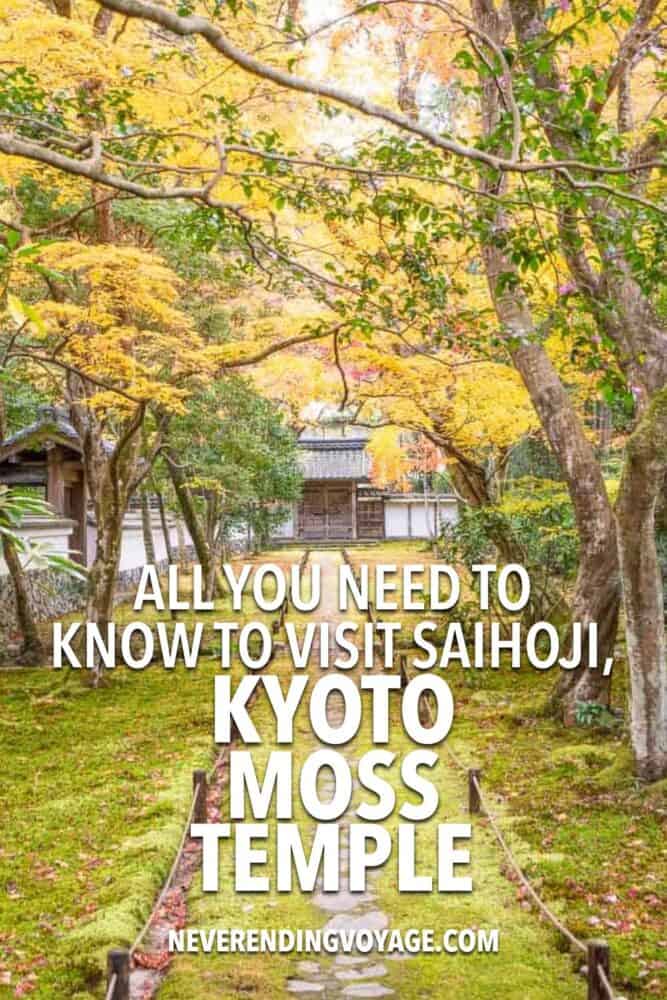
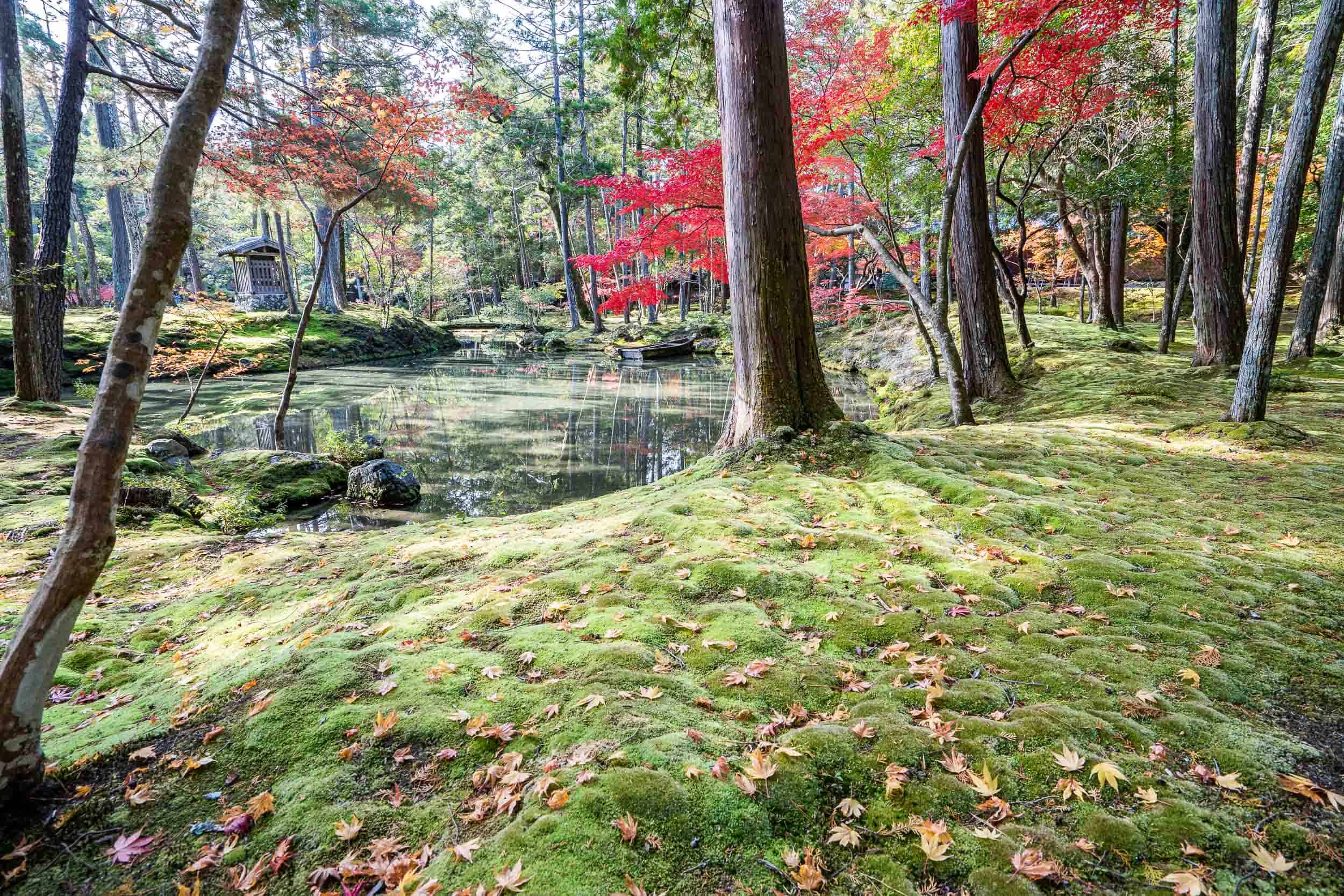
Leave a Reply